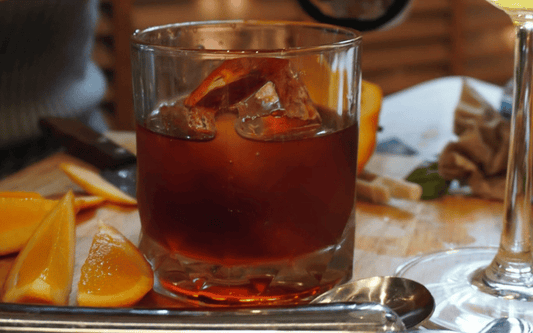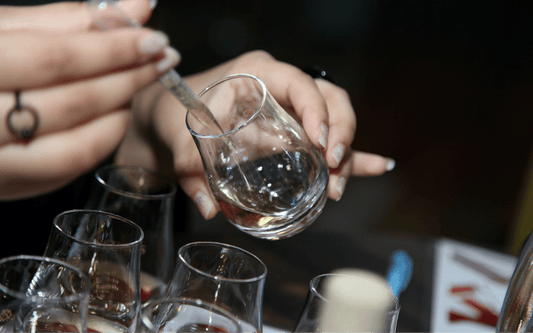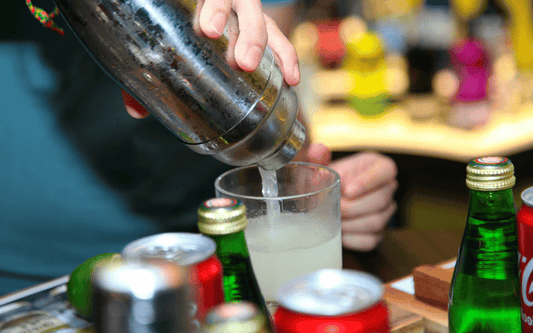RUM

Rum is one of the oldest distilled spirits, with a history that dates back to the 17th century. Originating in the Caribbean, rum quickly became synonymous with the region, though its roots can be traced back to ancient sugarcane plantations. The first known distillation of rum took place on the sugarcane plantations of the Caribbean, where slaves discovered that molasses, a byproduct of sugar refining, could be fermented into alcohol. The spirit quickly grew in popularity, becoming a staple in seafaring and colonial economies, and even playing a role in historical events like the American Revolution.
The Process of Making Rum
The production of rum involves several key steps:
-
Fermentation: The process begins with the fermentation of sugarcane juice, syrup, or molasses. Yeast is added to the sugar-rich liquid, converting the sugars into alcohol. This stage can take several days, depending on the desired flavor profile and the specific yeast strain used.
-
Distillation: After fermentation, the liquid is distilled to separate the alcohol from the water and other components. Distillation can be carried out in pot stills or column stills, each imparting different characteristics to the rum. Pot stills typically produce richer, more flavorful rums, while column stills create lighter, more refined spirits.
-
Aging: The distilled spirit is then aged in barrels, often made from oak. This aging process can last from a few months to several decades. During aging, the rum develops its complex flavors and takes on color from the wood. The tropical climate of the Caribbean accelerates the aging process, resulting in a quicker maturation compared to spirits aged in cooler climates.
-
Blending and Bottling: After aging, the rum is often blended to achieve a consistent flavor profile. Blending can involve mixing rums of different ages and styles. Finally, the rum is filtered, diluted to the desired proof, and bottled for distribution.
Categories of Rum and How They Are Produced
Rum can be broadly categorized into several types, each with distinct characteristics:
-
Light Rum: Also known as white or silver rum, this type is usually clear and has a mild flavor. It is typically aged for a short period and then filtered to remove any color. Light rum is ideal for cocktails where a subtle flavor is desired.
-
Gold Rum: This type has a golden color, which it acquires from aging in oak barrels. Gold rum has a more pronounced flavor than light rum, with notes of vanilla, caramel, and oak.
-
Dark Rum: Dark rums are aged for a longer period in heavily charred barrels, giving them a deep color and robust flavor. They often have rich, sweet notes of molasses, caramel, and spices. Dark rum is commonly used in baking and cooking, as well as in cocktails that require a bold flavor.
-
Spiced Rum: Spiced rums are infused with various spices and flavorings, such as cinnamon, cloves, and vanilla. These rums can be either light or dark and are popular in mixed drinks and cocktails.
-
Overproof Rum: This type of rum has a higher alcohol content than standard rums, often exceeding 50% ABV (alcohol by volume). Overproof rum is used in cocktails where a strong kick is desired or for flambéing dishes.
-
Premium and Aged Rum: These rums are aged for extended periods, often in oak barrels, and are typically enjoyed neat or on the rocks. Premium rums are known for their complex flavors and smooth finish.
How to Choose Rum
When selecting a rum, consider the following factors:
-
Flavor Profile: Decide whether you prefer a light, mild rum or a dark, rich one. The intended use (e.g., sipping, mixing in cocktails, cooking) will also influence your choice.
-
Age: Older rums tend to have more complex flavors. However, age isn't always an indicator of quality, as some younger rums can be equally impressive.
-
Brand and Origin: Different regions produce distinct styles of rum. For example, Jamaican rums are known for their bold flavors, while Cuban rums are typically smoother and lighter.
-
Price: While premium rums can be expensive, there are many affordable options that offer excellent quality.
Popular Rum Cocktails
Rum is a versatile spirit that features in many classic and modern cocktails:
-
Mojito: A refreshing cocktail made with white rum, fresh mint, lime juice, sugar, and soda water.
-
Daiquiri: A simple yet elegant drink combining white rum, lime juice, and sugar syrup.
-
Pina Colada: A tropical favorite made with rum, coconut cream, and pineapple juice.
-
Mai Tai: A complex cocktail featuring rum, lime juice, orgeat syrup, and orange curaçao.
-
Rum Punch: A fruity mix of rum, fruit juices, grenadine, and sometimes bitters, often garnished with tropical fruits.
-
Dark ‘n’ Stormy: A bold cocktail made with dark rum and ginger beer, garnished with a lime wedge.
-
Cuba Libre: A simple mix of rum, cola, and lime juice, also known as a Rum and Coke.
Rum is a spirit with a rich history and a diverse range of styles and flavors. From light, refreshing rums ideal for cocktails to dark, aged varieties perfect for sipping, there is a rum for every palate and occasion. Whether you're a seasoned enthusiast or a newcomer to the world of rum, exploring the different types and discovering new cocktails can be a delightful and rewarding experience. Cheers!




